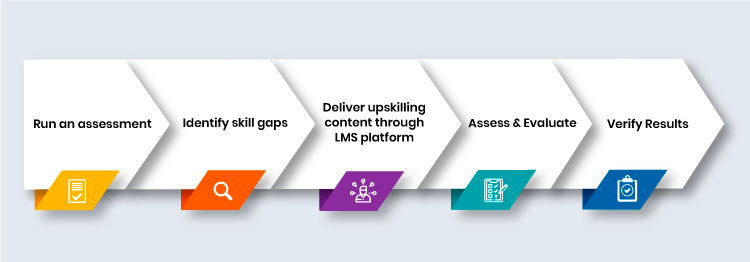“Change is the only constant in life.” – Heraclitus
History is full of missed opportunities. Take Xerox, for example. Despite inventing the personal computer, its failure to embrace digital transformation allowed rivals like Apple, Microsoft, and Dell to dominate the space. Back then, business seemed straightforward—build a great product, sell it, and grow.
Fast forward to today’s digitally driven, remote-first world, and that simplicity is long gone. The customer is more informed, expectations are higher, and disruption is constant. Businesses must continuously evolve or risk becoming obsolete.
And that evolution begins with people.
Future-Proofing Through Upskilling
In this high-velocity business climate, companies no longer compete solely with known rivals. They must also prepare for emerging competitors and black swan events—those unpredictable disruptions that now feel more frequent than rare.
Digital transformation (DX) is no longer optional—it's survival. But while tools and processes can be digitized quickly, people transformation is far more complex. This is where upskilling becomes a strategic necessity, not just an L&D checkbox.
According to McKinsey, 375 million workers may need to shift job categories as automation and AI become more prevalent. The solution? Upskilling at scale—efficiently, flexibly, and often remotely.
Why Upskilling from Home is a Smart Strategy
WFH is no longer a temporary fix—it’s a permanent reality for many organizations. And with that comes a golden opportunity: enabling employees to upskill from anywhere.
- Reduced Overheads & Logistical Challenges: Forget booking training rooms, managing schedules, or providing travel and refreshments. Virtual upskilling eliminates these headaches and costs. Employees learn on their own schedule, at their own pace.
- Personalized Learning Paces: Not everyone learns at the same speed. Online learning supports self-paced progress, giving employees the space to truly absorb new skills without pressure.
- Global Accessibility: Whether from their home office, a coworking space, or a café, employees can access training from anywhere. Geography no longer limits opportunity or learning equity.
- Better Monitoring & Results: Unlike traditional sessions, online platforms offer real-time data on progress and engagement. This makes it easier to spot learning gaps, adapt course materials, and personalize interventions for greater impact.
Discover how AI-Driven upskilling & reskilling platform is transforming learning by making development smarter, more personalized, and flexible for the workforce.
Powering Learning from Home: The Role of LMS Platforms
Modern Learning Management Systems (LMS) and Learning Experience Platforms (LXP) offer robust digital environments to manage, deliver, and track upskilling programs.
These platforms support:
- MOOCs
- Microlearning modules
- Virtual simulations
- Gamified assessments
Explore the 12 best upskilling platforms that supercharge virtual learning with structured pathways, real-time tracking, and scalable ROI.
Top LMS platforms include:
- LinkedIn Learning
- Coursera
- Udemy
- edX
- Udacity
- Codecademy
Many offer corporate solutions tailored to enterprise training needs—with flexible pricing models and customization options.
Check out the top 15 training needs assessment tools to find skill gaps and create training programs that work.
Measuring What Matters: Tracking Upskilling Impact
An effective upskilling strategy isn’t just about content delivery. It’s about measuring real progress.
Here’s how to do it right:
- Identify Skill Gaps: Start with a comprehensive skills assessment to pinpoint gaps across departments or roles.
- Align Training with Business Goals: Design modules that support both individual growth and organizational KPIs.
- Evaluate and Iterate: Use pre- and post-training assessments, performance reviews, and feedback loops to monitor impact and iterate continuously.
- Track On-the-Job Application: Leverage simulations, real-world projects, and supervisor feedback to gauge how effectively employees are applying new skills.

Explore the latest upskilling statistics to understand trends, measure training impact, and shape skill development strategies.
Final Thoughts: Invest in People, Win the Future
Whether it’s a global disruption or a shift in business strategy, upskilling from home empowers organizations to stay agile and resilient. More importantly, it builds a loyal, future-ready workforce prepared to take on new challenges.
When you invest in your people, you invest in your future. The ROI? Improved performance, stronger engagement, and a competitive edge that’s hard to beat.


.avif)
.webp)

.webp)


